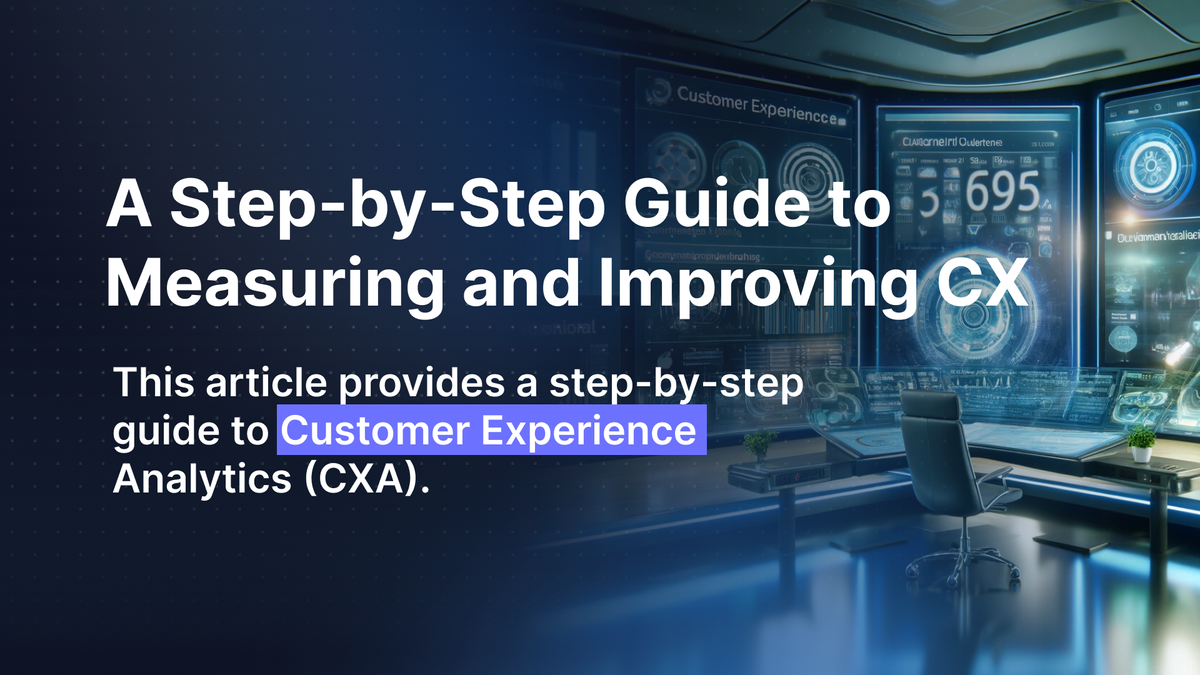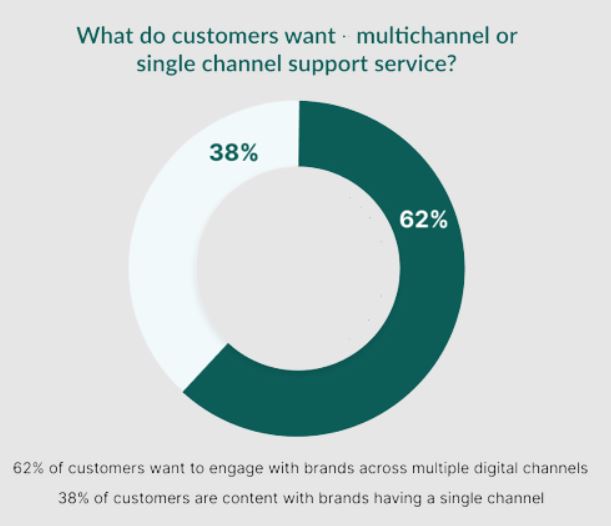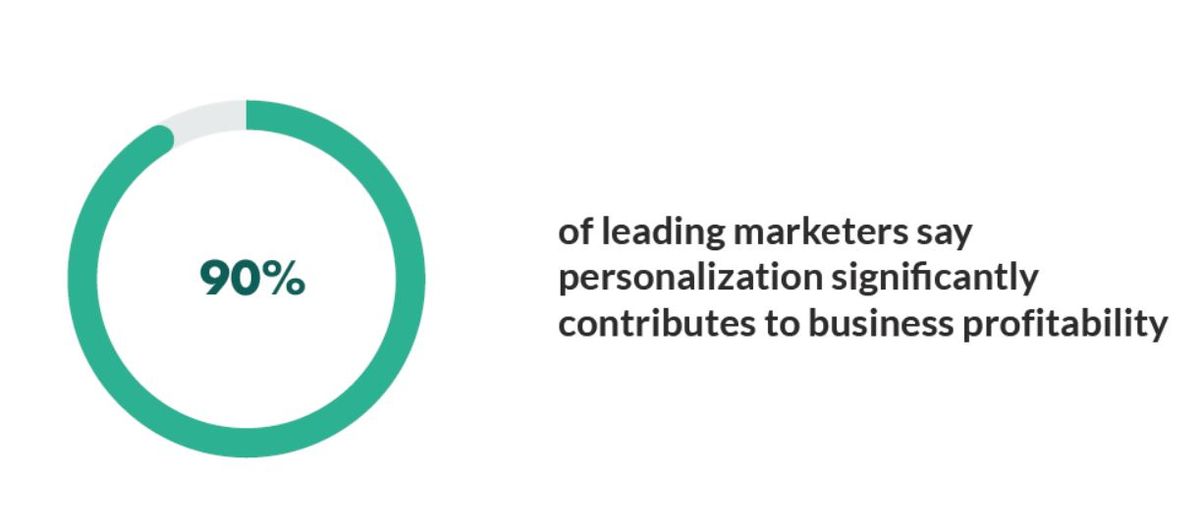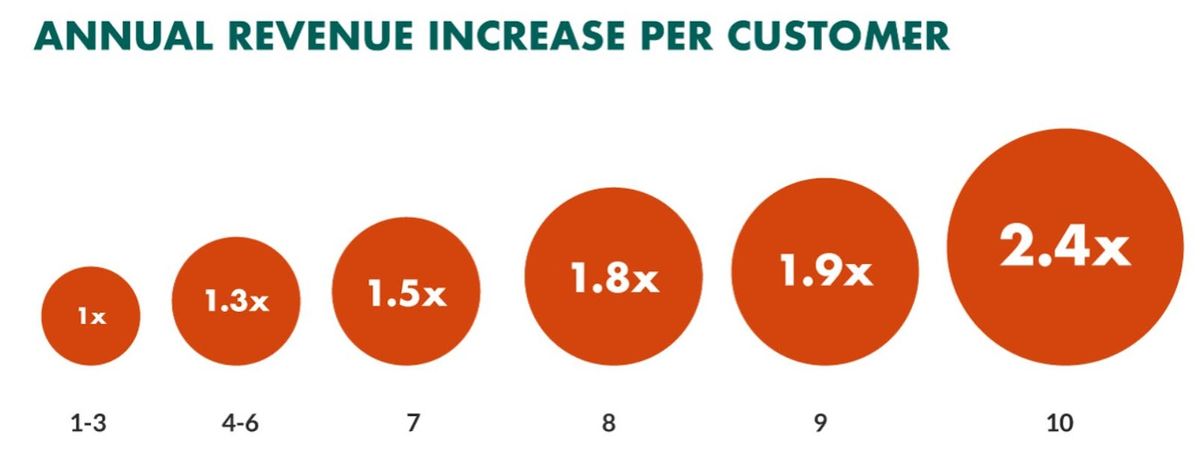This article provides a step-by-step guide to Customer Experience Analytics (...

Customer experience is undeniably the driving factor behind a modern business's success. Gone are the days when exceptional products were the sole reason behind customer satisfaction. Today's customers crave a positive journey throughout their interactions with your brand, from initial discovery to post-purchase support.
This journey, filled with touchpoints and emotions, is what truly excites them and shapes their decision to do business with you.
But how can you tap into your customers' hearts and minds to understand their desires and frustrations? This is where Customer Experience Analytics (CXA) comes into action. Keep reading this article to learn how digital CX Analytics provides you with invaluable knowledge and creates an exceptional customer experience for long-term business growth.
Customer experience analytics refers to systematically collecting and evaluating customer data across all touchpoints of a customer journey. This data comes from multiple resources such as customer service interactions, call centers, surveys, reviews, social media, and support tickets.
By analyzing this data, businesses can understand the entire customer journey, identifying pain points and areas of satisfaction. This helps them improve product features, personalize marketing, and boost customer loyalty.
Unlike customer interaction analytics, which focuses on analyzing support interactions to improve efficiency, CX analytics covers a broader perspective. It considers the emotional aspects of the customer journey. CX analytics provide you with a clear picture of how customers perceive and feel about their entire journey with your business. This reveals what makes them happy, what drives them away, and what their unmet expectations are.
These valuable insights help you to continuously improve, refine your offerings and align them with what truly matters for your customers.
According to research by PWC, 73% of consumers say that a good experience is key in influencing their brand loyalties. That's a significant figure, but why does customer experience matter this much for a business?

Customer experience (CX) is your customer's overall impression of interacting with your brand. It comprises everything from finding you online to using your product and getting after-purchase support. Basically, customer experience is the core element that determines whether a customer would become a loyal advocate or simply walk away after a purchase.
Customer experience analytics is a crucial part of every business. It covers everything from onboarding to sales, marketing, and customer support. By analyzing customer data across these touchpoints, businesses gain insights into existing customers, marketing effectiveness, recurring issues, and future trends.
Let's take a look at why customer experience analytics is important for a business:
CX analytics goes beyond just "what customers like." It provides a structured system to gather customer data across various channels into a single source. This data reveals actionable insight, hard stats, and figures about your customer's interests, recurring issues, and preferred channels. This enables you to make data-driven decisions that resonate with your audience.
66% of customers want businesses to understand their unique needs and expectations. Customer experience is directly linked with the customer journey, the entire path a customer takes with your brand. Customer experience analytics is a powerful tool to evaluate and even redefine this journey per your customer's preferences. Here is how:
CX analytics help you create a clear roadmap for your onboarding process. By analyzing data from sign-ups, tutorials, and support tickets, you can identify confusing steps or areas where new customers are stuck. This feedback helps you streamline the process, personalize onboarding based on customer needs, and ensure a smooth and positive first impression that keeps them coming back.
CX analytics helps you improve customer service by identifying gaps by analyzing common issues and agent responses. This helps tailor training and documentation. Additionally, tracking metrics like resolution times, satisfaction ratings, and peak support time performance helps determine staffing needs or whether automation can handle simple tasks, leaving agents for more complex matters.
Let's see an example of how a business utilizes CX analytics to improve its customer service.
"Wear and Co," a growing E-commerce clothing store, noticed a rise in customer service inquiries and negative reviews mentioning delayed deliveries. This was impacting customer satisfaction and leading to lost sales.
Wear and Co. utilized their CX analytics platform to understand the problem. They analyzed data from different sources:
By proactively these issues through CX analytics, Wear and Co. significantly reduced customer service inquiries related to shipping inquiries. Satisfied customers left more positive reviews, improving the overall customer experience.
KPIs are crucial for starting customer experience analytics. They provide a clear direction and focus for your efforts. Here are some of the most essential KPIs to consider for CX analytics, offering a holistic view of your customer experience.
This metric directly measures customer sentiment. CSAT surveys typically ask a simple question like "How satisfied were you with your experience?" Responses are often on a scale (1-5 stars or similar). To calculate CSAT, divide the number of positive responses (usually 4 or 5 stars).
This metric goes beyond just satisfaction and measures customer loyalty. NPS surveys ask how likely a customer is to recommend your brand to others (typically on a 0-10 scale). Customers are then categorized as Promoters (9-10, highly likely to recommend), Passives (7-8, neutral), or Detractors (0-6, unlikely to recommend).
This metric focuses on the ease of interacting with your business. CES surveys typically ask a question like "How easy was it to...?" (resolve an issue, make a purchase, etc.) on a scale (often 1-7, easy to difficult). A high CES indicates a smooth and effortless customer experience, while a low CES suggests areas where you can make interactions simpler and less frustrating.
AHT measures the average time it takes agents to resolve a customer inquiry or issue. A lower AHT indicates efficient customer service, while a high AHT suggests areas for improvement, like streamlining processes or providing better agent training.
It indicates the percentage of customers who stop doing business with you within a specific period. A low churn rate indicates customer loyalty and retention, while a high churn rate signifies a need to understand why customers leave.
Customer lifetime value estimates the total revenue a customer brings to your business throughout their relationship. A high CLTV indicates valuable customer relationships, highlighting the importance of keeping your existing customers happy.
Now that we have covered the key metrics, here is a step-by-step guide to get started with customer experience analytics.
The first step in CX analytics should always be setting clear goals and benchmarks. What aspects of your customer experience do you want to improve? Don't try to fix everything at once! Identify areas that need the most attention. Here are some examples:
A good strategy is to leverage your existing data before investing in new resources. Evaluate what you already have - website traffic data, customer satisfaction analytics (surveys, reviews), and support tickets - to discover valuable insights.
Research shows that at least 62% of customers want to engage with brands through multiple channels. To truly understand your customers' experience, you need to listen to everywhere they are.

Collecting and analyzing customer data, scattered across email, live chats, surveys, or social media, could be daunting. This is where a powerful CX analytics platform comes to the rescue. Here's what to consider before choosing the right platform:
Once you have gathered valuable customer data from various resources, it is time to exercise its potential. Here's how a powerful CX analytics platform helps you transform data into actionable insights:
By analyzing data and customer experience metrics, businesses can gain valuable insights into improving customer satisfaction and loyalty.
The final step is transforming raw data into actionable insights such as studies or reports. These reports translate complex data into easy-to-understand visuals, providing your organization with a roadmap for improvement. This data-driven approach empowers you to make informed decisions, optimize your customer experience, and achieve long-term success.
Let's see how you can utilize those customer insights. Here are some powerful customer experience analytics use cases to optimize your customer journey.
It is important to remember that acquiring a new customer costs five times more than retaining the existing one. Customer experience analytics (CXA) is the key to keeping your hard-earned customers happy and coming back for more. By analyzing data like purchase history, sentiment feedback, and support interactions, CXA helps you identify customer pain points and areas for improvement. Using these insights helps you personalize the shopping experience, proactively address concerns, and offer targeted support.

Personalized marketing uses customer data to create customized experiences for each individual. Here's how CX analytics empowers this strategy, leading to increased profitability:
As per Think by Google, 90% of leading marketers say personalization significantly contributes to business profitability. This is because it helps you increase sales, reduce customer churn, and

CX analytics goes one step ahead and turns happy customers into loyal advocates. This is because it gives you a clear idea of "what customers want from you." You can then address customers' concerns proactively, personalize your offering, and provide better customer support, leading to happier customers who come back for more. Plus, CXA predicts customer churn, allowing you to win back at-risk customers before they leave.
Customers who are more satisfied with the customer experience of a company spend 140% more and remain loyal for up to 6 years.

In conclusion, customer experience analytics (CXA) goes beyond simply tracking interactions. It emphasizes the emotional aspects of your customer journey by analyzing customers' sentiments and feedback to provide a holistic view of customer satisfaction. CX analytics enable you to improve customer experience with data and real-time insights.
Aidbase helps you start a CX analytics journey with AI support and provides real-time insights. AI chatbot customer service can seamlessly interact with customers, resolving issues and analyzing their preferences, sentiments, and behavior during customer service. These insights empower you to predict future business trends and provide an exceptional customer experience.